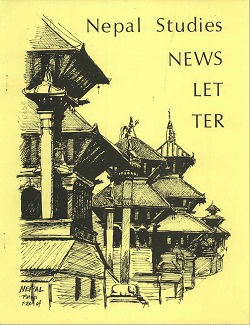Author Biography
Mahesh Sharma is Professor of History at Panjab University-Chandigarh, and ICCR-India Chair Professor at Tel-Aviv University, Israel. He was Fellow at the Indian Institute of Advanced Study (Shimla), Senior Fulbright Fellow at the Center for India and South-Asia (UCLA), and Visiting Faculty at UNF-Jacksonville, Florida. Apart from articles in peer-reviewed journals and book-chapters, Prof. Sharma is the author of: Western Himalayan Temple Records: State, Pilgrimage, Ritual and Legality in Chamba, (Leiden/Boston: Brill, 2009); The Realm of Faith: Subversion, Appropriation and Dominance in the Western Himalaya, (Shimla: IIAS, 2001), and co-editor, Indian Painting: Themes, Histories, Interpretations (Ahmedabad: Mapin, 2013).
Abstract
There are poignant westernHimalayan ballads that narrate the tales of women who were immured at the foot of a waterway (kulh), to ensure a steady supply of water. In this paper we probe how the early legends of walled-up women were linked to state formation and how ruling elites later used such events to move up the social and political ladder. The paper also explores how pervasive the patriarchal hold over the lives of women was, how nuanced was the power of patriarchs, and how death became a spectacle, echoed in the ballads of walled-up wife. The focus is not only on narrative representations. Rather, we presume that like all narratives these ballads too are rooted in specific historical, cultural, and ideological contexts. We ask, therefore, what ideological goals and rhetorical strategies may have contributed to representations within the cultural reality of the narrators and audiences. Also, how does this exceptional portrayal function within the ‘unified narrative’ and its overall conceptualization of women beyond the walled-up wife? Crucial to understanding these issues are the dominant gender discourses that were prevalent in the culture-scapes in which these ballads were formed. While recounting some of these ballads, therefore, we chart out the trajectory of their progression as a genre, which eventually binds them as a meta-narrative reinforcing the patriarchal values rather powerfully. It might be of some interest to note that there are similar ballads and folktales in easternEurope and other parts of India as well, which open up the questions about how pervasive and insidious such practices were, and how entrenched the patriarchal values were.
Acknowledgements
The avatars of this paper was presented at the NMML-New Delhi; University of Haifa; and as ‘ICCR India Lecture’ at the University of Tel-Aviv. Gratefully appreciate the comments during these interactions. Special thanks to Kirin Narayan, Arik Moran, and Catherine Warner for patient readings and suggestions.
Creative Commons License

This work is licensed under a Creative Commons Attribution 4.0 License.
Recommended Citation
Sharma, Mahesh. 2016. State, Waterways and Patriarchy: The Western-Himalayan Legend of Walled-up Wife. HIMALAYA 35(2).
Available at:
https://digitalcommons.macalester.edu/himalaya/vol35/iss2/13
‘Princess and the Drummer boy’, ca. 1730-40. Acc no. 173. Government Museum and Art Gallery, Chandigarh.
Plate 2.JPG (7785 kB)
‘Princess and the Drummer boy’, ca. 1730-40. Acc no. 172. Government Museum and Art Gallery, Chandigarh.
Plate 3.jpg (672 kB)
Katoch princesses’ committing Sati, accompanied by their maids, at the funeral pyre of Maharaja Ranjit Singh. Ca. 1840. Acc no. 1925.0406.0.2. The Trustees of the British Museum, London.


